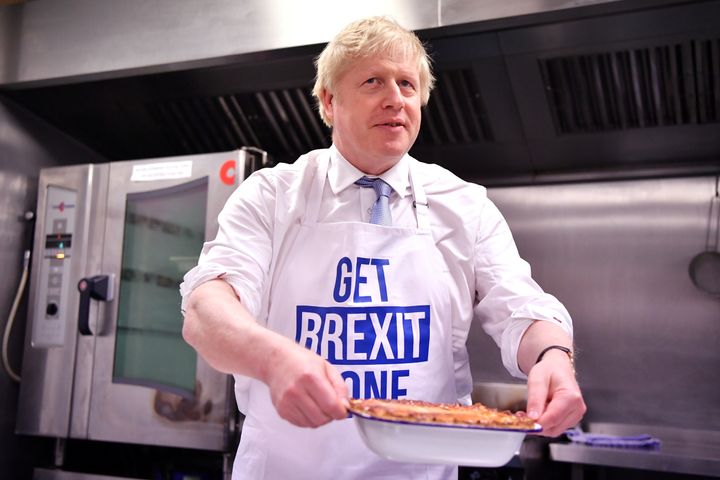Five years ago to the day, then prime minister David Cameron stepped outside his front door and threw the nation into its biggest existential crisis in decades.
What we quickly came to know as Brexit was framed as a momentous shift in the political landscape from the off, with Cameron describing the referendum – which would eventually take place little more than four months later – as “one of the biggest decisions this country will face in our lifetimes”.
Of course, the road to the UK’s withdrawal from the European Union didn’t start on that day. Cameron, in his infinite wisdom, had specified the referendum as a Conservative election pledge all the way back in 2013, against a backdrop of mounting Euroscepticism in parts of his own party, and the rest, as they say, is history.
But it was February 20, 2016, 1,827 days ago, that the nebulous, tenuous idea of leaving the EU became tangible. Suddenly we were all on one side or the other, and somehow – even with Brexit supposedly still behind us – many of us are still there.
If you’re looking for an anthology of every political twist of the past five years, then we apologise. This isn’t it.
If it’s a brief look through the most batshit things we’ve pretty much just decided to collectively accept, then welcome. There’s a lot to unpack.
Two whole general elections and parliamentary chaos
As we’ve just mentioned, this isn’t the place for a detailed political breakdown of the past five years.
There are whole books for that – quite a few of them, actually – and honestly we’d struggle to get 60 months’ worth of twists and turns under one of these subheadings, but here’s an extremely (and we mean extremely) brief guide.
In that time, we’ve had three prime ministers.
David Cameron, who promised the referendum, campaigned to remain and resigned almost immediately after the result was announced in June 2016.
Theresa May, who took charge after a leadership election that most people had dropped out of, and made the spectacularly misjudged decision to hold a general election in 2017 in a bid to “strengthen her hand”.
Cue a hung parliament, and years of mind-numbing debates, prime ministerial statements we all got really excited about before they collapsed into nothing, and Brexit itself being kicked further down the road.
And May resigned in May 2019, kicking off another leadership contest that landed us with current PM Boris Johnson.
He was promptly forced to extend Article 50 for a third time (not before unlawfully proroguing parliament), setting in stone what would eventually become “Brexit day” on January 31, 2020.
A landslide general election in December 2019 secured the Conservative majority once again, and the UK eventually left the EU – sort of. First, there was an 11-month “transition period” that ended at midnight on December 31.
Deep division, inflammatory rhetoric and the murder of a sitting MP
As a country that likes to laugh at its own ridiculousness, Brexit has given us as lot to laugh about. But first, we have to take a serious look at the deep division the referendum exposed, and its deadly consequences.
Brexit brought a resurgence in political extremism, emboldening factions of the far-right leading to an explosion in the number of xenophobic hate crimes, as well as threats and acts of violence towards politicians and other officials.
Labour MP Jo Cox was murdered days before the referendum outside a library in her constituency by 52-year-old Thomas Mair, who had a history of psychiatric problems, held far-right views and, according to a witness, shouted: “This is for Britain. Britain will always come first,” as he attacked.
According to UK in a Changing Europe, parliament faced “unprecedented attacks” during the Brexit process, with MPs regularly targeted.
In 2019 Boris Johnson came under fire for his language around Brexit, specifically his use of the term “surrender bill” to refer to a controversial act passed to avoid a no-deal Brexit.
The PM sparked a huge backlash in the House of Commons after responding to Labour MP Paula Sherriff, who made a heartfelt speech calling on him to stop using language such as “surrender”, “traitor” and “betrayal”, by dismissing her concerns as “humbug” and saying “the best way to honour the memory of Jo Cox and to bring this country together is, I think, to get Brexit done”.
Tweets, tweets, lots of tweets
We’ve been arguing about politics on Twitter pretty much since day one. But when it comes to Discourse™, there’s one current affairs topic that has truly come to dominate – and has done so with remarkable sticking power.
Has a week gone by in this godforsaken era where we haven’t had a Brexit-related hashtag or, at the very least, a trending topic? It doesn’t even have to be explicit any more – a glimpse of “fishing” or “the 48%” or “Big Ben” is enough of a red flag to send anyone running.
From #FBPE pile-ons to St George flag profile picture after St George flag profile picture, we’re still living firmly within a very specific brand of online tribalism spawned by the referendum. Brexit might technically be done, but Brexit Twitter looks set to remain the (virtual) land that time forgot.
But while it’s important to emphasise that the vast majority of Brexit-based spats fell into two distinct camps (unbelievably dull or actually quite fun for two hours before 15 corporate accounts weighed in to really suck out the joy), the process of leaving the EU also intensified hateful rhetoric to the point of outright abuse being directed towards countless users of the platform.
MPs, officials and everyday campaigners became the subject of death threats, which spilt over from social media and warped into phone calls and letters threatening violence.
The secret fashion codes
It was the fashion moment that launched a thousand Etsy pop-up shops, and caused actual Vogue to describe the look as “maximalist”. Almost 18 months on, there are probably still too many people with a spider emoji in their Twitter username.
Lady Hale became an instant star in September 2019 as she declared Boris Johnson’s prorogation of parliament “void and of no effect”, but it’s the arachnid-inspired jewellery she sported that really clung to the public imagination.
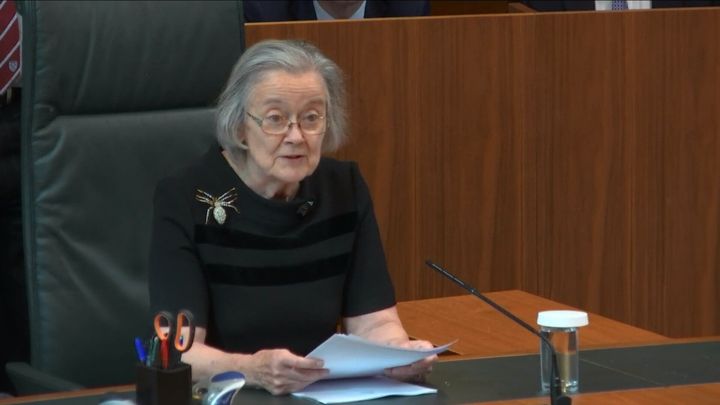
But of course, we couldn’t just let a nice sparkly spider brooch just be a nice sparkly spider brooch. What did it mean? What was she trying to tell us? Was it a secret message to Boris Johnson?
Theories abounded, from suggestions it represented “feminine energy” to claims it pointed toward The Who’s track, Boris the Spider.
Ten months later we heard from the judge herself, who made it crystal clear she “wasn’t giving any sort of hidden message”.
Then we had to go through it all over again with the actual Queen.
“Queen’s brooch during Christmas speech hides secret message that she’s a REMAINER,” said The Sun in a headline, attributing the claim to “desperate anti-Brexit academics”.
Apparently the monarch’s choice of a blue cashmere dress and a circular sapphire and diamond brooch, which at a fair distance could perhaps bear a fleeting resemblance to the stars of the EU flag, was enough to betray her pro-European beliefs.
Shockingly, 94-year-old Queen Elizabeth II has never actually commented on the supposed sly symbolism of her wardrobe choices, so we’ll probably never know the truth.
Not even democratically-elected female leaders of Scotland and the UK escaped the last five years without their own wardrobe choices being called into question.
In a rare moment of unity, people across the political spectrum found common ground in absolutely hating this Daily Mail front page, featuring a picture of first minister Nicola Sturgeon and then-prime minister Theresa May alongside the headline; “Never mind Brexit, who won Legs-it!”
Celebrities
Of course, politicians couldn’t have all the fun. Enter the celebrities, many of whom took it upon themselves to make their views on the referendum very, very clear.
In what can only be described as one of the greatest live television moments in history, Danny Dyer led the charge by branding Cameron “a twat” while discussing the former prime minister’s role in the referendum during a 2018 appearance on ITV’s Good Evening Britain.
“Who knows about Brexit?” he asked. “No one’s got a f-ing clue what Brexit is. You watch Question Time, it’s comedy.
“No one knows what it is, it’s like this mad riddle. [...] So what’s happened to that twat David Cameron who called it on?
“How comes he can scuttle off? He called all this on. Where is he? He’s in Europe, in Nice, with his trotters up.
“Where is the geezer?”
Although memorable, Dyer’s rousing speech is just one example of a political epoch littered with so many baffling celeb moments.
Take this last-ditch campaign moment from national treasure Elizabeth Hurley, for example.
Or, in a particularly frenzied moment we still can’t believe wasn’t actually a fever dream, Bob Geldof and his boat of Remainers chased a Farage-led Brexit flotilla around and around in circles along the Thames.
A lot of protests
Brexit has given us headline after headline, but it has also given us what feels like an endless stream of images that continue to live absolutely rent-free in our collective memory.
Among the most enduring are the pictures of the anti-Brexit demonstrations that saw hundreds of thousands of people – and possibly even more blue starred berets – turn up in central London to protest against the result, or demand a new referendum altogether.
The largest of these, calling for a second referendum, took place on March 23, 2019, with organisers claiming that more than a million people (this number has never been verified and was almost certainly lower), attended – face paint, flags and witty banners in tow.
While attendance might not have topped the million mark, many of us will likely always remember the aerial pictures of a crowded central London, synonymous and yet somehow discordant with the crushing anti-climax of mind-numbing parliamentary delay after delay.
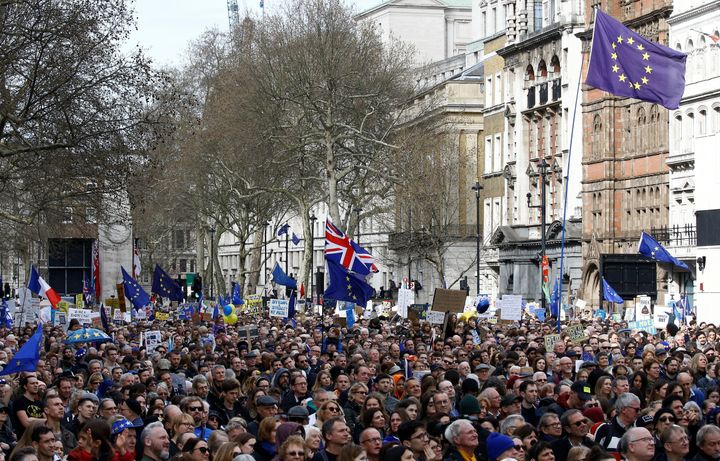
But while Remainers showed up in numbers, Brexiteers (well, a handful of them) really put in the miles.
Led by Nigel Farage (who else?), around 100 people set off from Sunderland in March 2019, ready to walk 200 miles – yes, 200 whole miles – over the course of a fortnight to London in protest against a perceived effort to “betray” the “will of the people”.
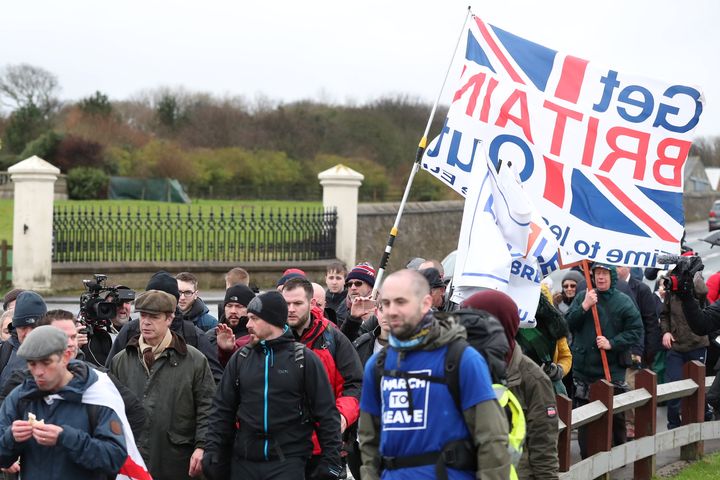
Gathering in the pouring rain, protesters were met with counter-protesters, sparking warring chants of “we love workers’ rights” and “EU money grabbers”, according to one Guardian report.
While the march only attracted a small number of protesters, the group met with thousands of Brexit supporters in central London on March 29, 2019, with five people arrested as they demonstrated against the UK’s exit from the union facing yet another delay.
The humble milkshake somehow became a threat
What do you remember of May 2019? Perhaps it was the local elections, or the birth of Harry and Meghan’s son Archie. Maybe it was the eventual resignation of Theresa May, or the last Eurovision BC (Before Covid).
For some of us, it will linger on as the month Nigel Farage was reportedly trapped on his Brexit bus to avoid a number of men carrying suspicious milkshakes.
We’d love to describe these as “simpler times” but, actually, were they?

The former Ukip leader had good reason to be nervous, having already been the victim of a milkshaking incident just days before in Newcastle.
It followed former EDL leader Tommy Robinson and Ukip candidate Carl Benjamin also being targeted with the dairy beverages in the days prior.
A Brexit Partly spokesperson later robustly denied reports Farage had hidden on his bus to avoid being hit with a shake, telling The Sun the suggestions were “simply not true”.
Endless (and we mean endless) photo opportunities for Johnson
Boris Johnson with a big fish!
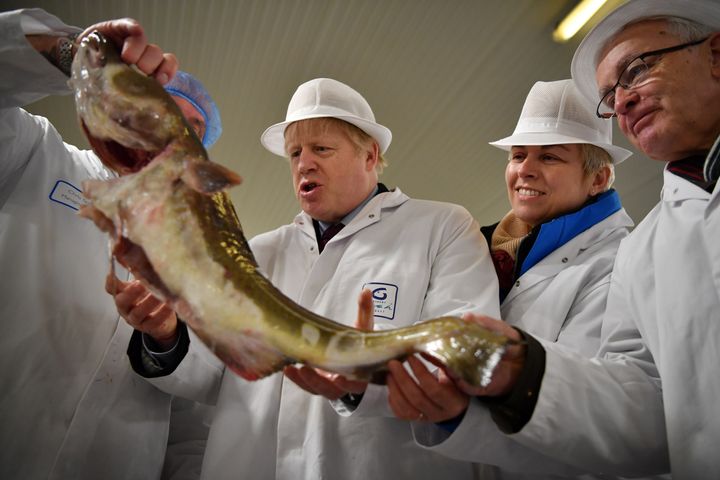
Boris Johnson launching a digger through a foam brick wall!
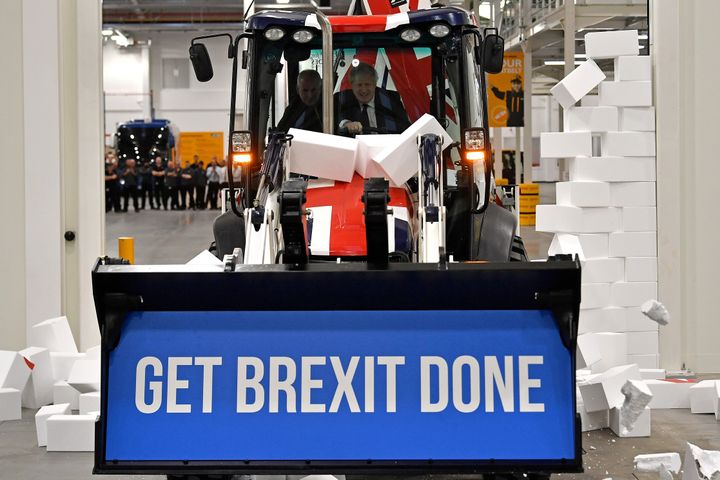
Boris Johnson with pies!
